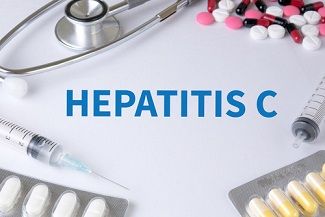Non-Targeted Screening Program Could Identify More HCV Infections
With an all-ready challenging patient population to treat, having a program to get more people into treatment can be helpful in an underserved group.

Hepatitis C (HCV) remains undertreated due to a host of reasons. Some of these challenges surrounding health inequities include a lack of access to health care, limited screening and treatment possibilities. In addition, there is stigma associated with the virus. And lastly, there are some people with hepatitis who go undiagnosed.
A new study examined at a hepatitis C virus non-targeted screening program that may help identify more infections in regions with high HCV burdens.
A team, led by Cody A. Chastain, MD, Department of Medicine, Vanderbilt University Medical Center, evaluated the performance of non-targeted HCV screenings in emergency departments and other healthcare settings to identify HCV infections and improve HCV care. In the study the group positive for HCV by RNA testing in the emergency department, the linkage to care was just 44.1%, compared to 67.6% for patients in outpatient clinics and 50.9% for patients in inpatient units.
Non-Target Screenings
A non-target HCV screening and linkage-to care program has been implemented at 10 institutions at different health settings in the Southern Appalachian region, including emergency departments, outpatient clinics, and inpatient units. Southern Appalachia is known as an area with a high HCV burden.
“Many potential methods have been proposed to achieve broad screening of the US adult population, including routine, non-targeted HCV testing in emergency departments, inpatient hospital units, and outpatient clinics,” the authors wrote. “However, the utility of non-targeted HCV screening, defined as testing for HCV infection regardless of the patient's symptoms and known risk factors for HCV infection, in these settings remains incompletely understood.”
The new program used non-targeted screening methods where patients were offered HCV testing without showing clinical symptoms or identifying risk factors for HCV infections.
Implementing the Screening Program
In the multi-center, multi-year surveillance program, the investigators looked at the data of 195,152 patients screened for HCV between 2017-2019 after implementing a screening program at the time of patients accessing healthcare.
The investigators tested serum samples for each patients for HCV antibodies. If a patient tested positive, the investigators used HCV ribonucleic acid (RNA) testing to confirm an active infection.
Patients with positive results were linked to further HCV care. Overall, 8.5% (n = 16,529) of patients screened were positive by antibody testing. Further RNA testing showed 5.2% of screened patients and 61.3% of patients positive by antibody test (n = 10,139) were positive.
Of the positive patients, 57% (n = 5778) were successfully linked to HCV care.
The investigators also looked at data from specific locations.
There were 83,645 patients screened in emergency departments, 10.8% (n = 9060) were positive by the HCV antibody test. Of this group, 6.3% (n = 5243) were confirmed positive using the RNA test.
However, in the group positive by RNA testing in the emergency department, the linkage to care was just 44.1%, compared to 67.6% for patients in outpatient clinics (P <0.01) and 50.9% for patients in inpatient units (P <0.01).
“Non-targeted HCV screening in acute care settings can identify large numbers of people with HCV infection,” the authors wrote. “To optimize the utility of these screening programs, future work is needed to develop best practices that consistently link these patients to HCV care.”
The study, "Non-targeted hepatitis C virus screening in acute care healthcare settings in the Southern Appalachian region," was published online in the Journal of American College of Emergency Physicians Open.
This article, Non-Targeted Hepatitis C Virus Screening Helps Identify Potential Missed Cases, was originally published on HCPLive.
